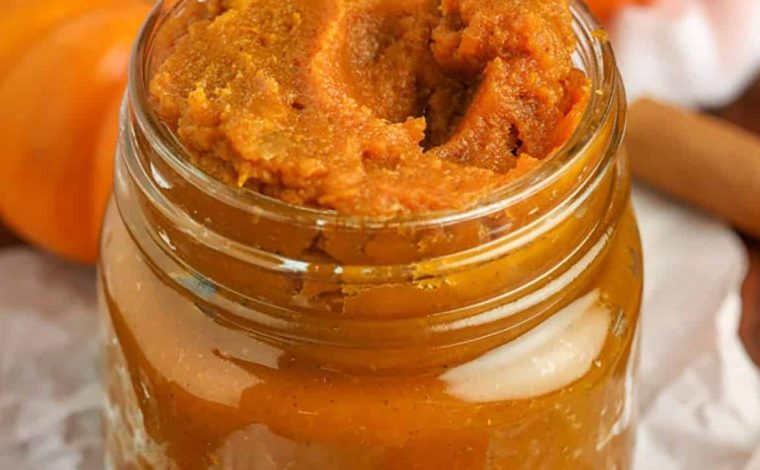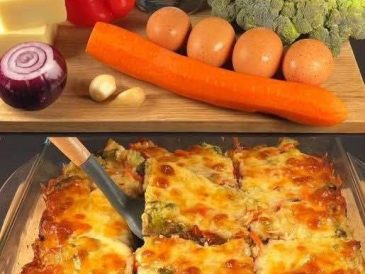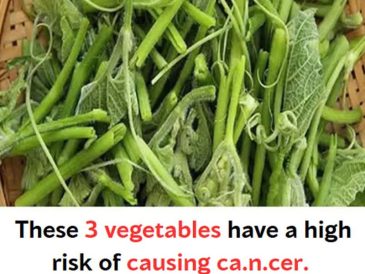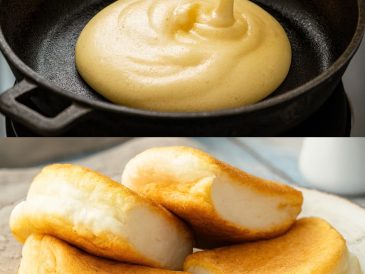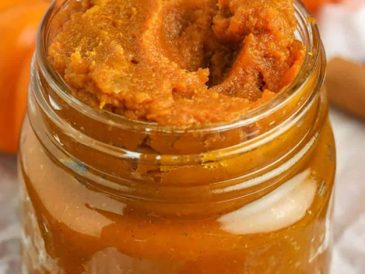Step 3: Cook the Mixture
- Place the pot over medium heat. Bring the mixture to a light simmer, stirring often so nothing sticks.
- After simmering, reduce the heat to low to maintain gentle bubbling.
- Continue cooking uncovered, stirring occasionally, for about 45 to 60 minutes. The goal is to reduce and thicken the mixture. It should become spreadable. (In shorter versions you may cook about 20 to 30 minutes if using canned pumpkin puree).
- Be careful because as it thickens it may bubble and splash. Use a deep pot and stir gently near center.
Step 4: Add Butter (Optional) and Test Thickness
- Once mixture has thickened, remove from heat temporarily.
- Stir in the butter (if you use it). Mix until melted and smooth.
- To test thickness: let a spoonful cool a little and see how it spreads. If it is runny, return to heat and cook a bit more. If too thick, you may stir in a little warm apple juice.
Step 5: Fill Jars and Seal (Water Bath Method)
- Using a ladle and funnel, fill each hot jar leaving about ¼ inch headspace (space from top of spread to rim of jar).
- Remove air bubbles by gently sliding a nonmetal utensil around inside edges.
- Wipe the rim of each jar with a clean damp cloth to remove any spills.
- Place a warmed lid on top. Then screw the ring until fingertip tight (not overly tight).
- Place jars into a large pot of hot water (water bath canner). The water level should cover jars by at least 1 inch above lids.
- Bring water to boil, then process jars for 10 minutes (adjust time if you are at high altitude).
- After 10 minutes, turn off heat and let jars sit in water for 5 more minutes.
- Carefully lift jars out and place on a towel on counter. Do not disturb for at least 12 hours.
Step 6: Check Seals and Store
- After 12 to 24 hours, check lids. If the lid is depressed in center (it did not pop back), the jar is sealed.
- If any jars failed to seal, refrigerate and use them first.
- Label jars with date. Store in a cool, dark place. Properly sealed jars can last many months.
Why This Recipe Is Special
This pumpkin butter recipe is special for many reasons:
- Pure and natural ingredients: You control all ingredients. You can use better sugar, avoid preservatives, and reduce sugar if you prefer.
- Deep flavor: The blend of spices, apple juice, vinegar, and pumpkin creates a rich taste. It is more intense than plain pumpkin puree.
- Versatile use: You can use it on toast, pancakes, muffins, yogurt, oatmeal, or swirl into baked goods.
- Long shelf life: Because of the canning step, you can preserve the flavor of fall and enjoy it in winter.
- Health potential: Pumpkin is rich in beta-carotene (a precursor of vitamin A), fiber, and some minerals. When you make your own, you avoid artificial additives.
- Satisfying project: The process of making and sealing jars gives a sense of achievement. Opening a jar months later feels rewarding.
- Gift value: Homemade pumpkin butter in jars makes a thoughtful, edible gift for holidays or friends.
While the spread is sweet, you can adjust sugar lower if you aim for better fitness. You may also use alternative sweeteners like coconut sugar or maple syrup more. Because it is soft and gentle, even people new to canning can follow it carefully.
Extra Tips for Better Taste
Here are tips and tricks to improve your pumpkin butter:
- Use quality pumpkin: If you make your own pumpkin puree, remove excess water and blend smooth. A firm sugar or pie pumpkin often gives better flavor.
- Cook slowly: The longer gentle cooking helps flavors deepen. Do not rush by using very high heat.
- Adjust sweetness after cooking: After it cools a little, taste. If too sweet, add a tiny bit more vinegar or a pinch of salt to balance.
- Spice adjusts: Some like more cinnamon or a bit more ginger. You can add extra if you like those flavors stronger.
- Add vanilla: A small splash (¼ teaspoon) of vanilla extract at end can add a lovely aroma.
- Fruit blend: You can mix a bit of apple or pear puree for extra complexity.
- Thicker texture: If you want thicker spread, you may stir in a small amount of pectin (fruit pectin) near end, but use carefully.
- Sterilize well: Make sure jars and lids are clean and hot. Any dust or debris may affect seals.
- Altitude adjustment: If you live high above sea level, you may need to increase processing time by a few minutes.
- Small batch testing: If you are new, try a small batch first to practice before making many jars.
- Store opened jars in fridge: Once opened, keep jar in refrigerator and use in a few weeks.
- Shake jars before use: If separation happens, stirring or shaking gently helps.
Final Thoughts
I hope this guide gives you confidence to make and can your own pumpkin butter. You will enjoy the aroma as it cooks, the thick texture, and the delight when you open a sealed jar months later. This is more than a recipe. It is a way to capture autumn in a jar. Whether you make it for yourself, for gifts, or for cozy breakfasts, it brings warmth and joy. Take your time, follow the steps, and adjust to your taste. Happy canning and happy tasting!
Nutrition Details
Below is a rough nutrition table. This is an estimate and can vary with your exact ingredients. Use it as a guide only.
| Nutrient | Per Serving | Serving Size |
|---|---|---|
| Calories | ~ 35 to 45 kcal | about 1 tablespoon (20-30 g) |
| Total Fat | ~ 0 g | — |
| Saturated Fat | ~ 0 g | — |
| Cholesterol | ~ 0 mg | — |
| Sodium | ~ 2 to 10 mg | — |
| Total Carbohydrate | ~ 9 to 10 g | — |
| Dietary Fiber | ~ 1 g | — |
| Sugars | ~ 7 to 9 g | — |
| Protein | ~ 0 g | — |
| Vitamin A (from beta carotene) | moderate percent | — |
| Calcium, Iron, Potassium | small amounts | — |
Notes on this table:
- Many commercial pumpkin butters list ~ 41 calories per tablespoon.
- Another brand shows 2 tablespoons having 41 calories.
- The “Old Fashioned Pumpkin Butter” recipe reports ~ 33 calories per serving with 8 g carbs.
- A “shortcut pumpkin butter” version gives 37 calories per serving (9 g carbs).
Because your homemade version may have slightly more or less sugar or juice, your numbers may differ.
Disclaimer
This article gives a recipe and general nutrition information. I am not a doctor or dietitian. Everyone’s body is different. What is safe or good for one person may not be good for another. If you have health issues, medical conditions, or special diet needs, please check with your doctor or a registered dietitian before trying new recipes or using nutrition information to guide your diet. Use your own judgment and listen to your body.

